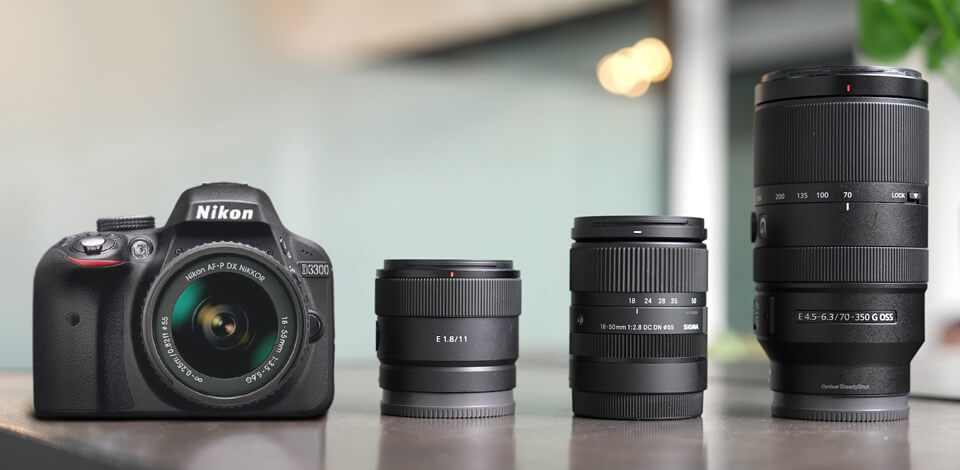
People often ask me how to make their Nikon D3300 better. I always tell them to find the right lens for Nikon D3300 first. The D3300 body itself is still a great camera for beginners. You can get one used for around $300 to $350.
The people I work with at FixThePhoto still say the Nikon D3300 is a good, cheap camera to start with. But the basic lens that comes with it (18-55mm) can't do everything. New photographers kept asking me the same question again and again: “Which lens for Nikon D3300 is best for portraits, wildlife, close-ups, or just normal photos?”
I did a lot of research to find the best lenses. I asked my coworkers and clients for their opinions, looked carefully through Reddit discussions and photography websites, and read hundreds of customer reviews on Amazon. Finally, I tested over 35 lenses for Nikon D3300 myself (some I borrowed from friends, some I rented).
What I look for in a Nikon D3300 lens:
When I help beginners choose a new lens to replace the one that came with their camera, I always tell them this: the lens you pick affects your photos much more than the camera itself does. If you have a Nikon D3300, choosing the right lens can make your pictures look amazing. Here are my key tips:
Amazon: 50+ bought in the past month
B&H: 700+ sold in the past year
Adorama: 600+ sold in the past year
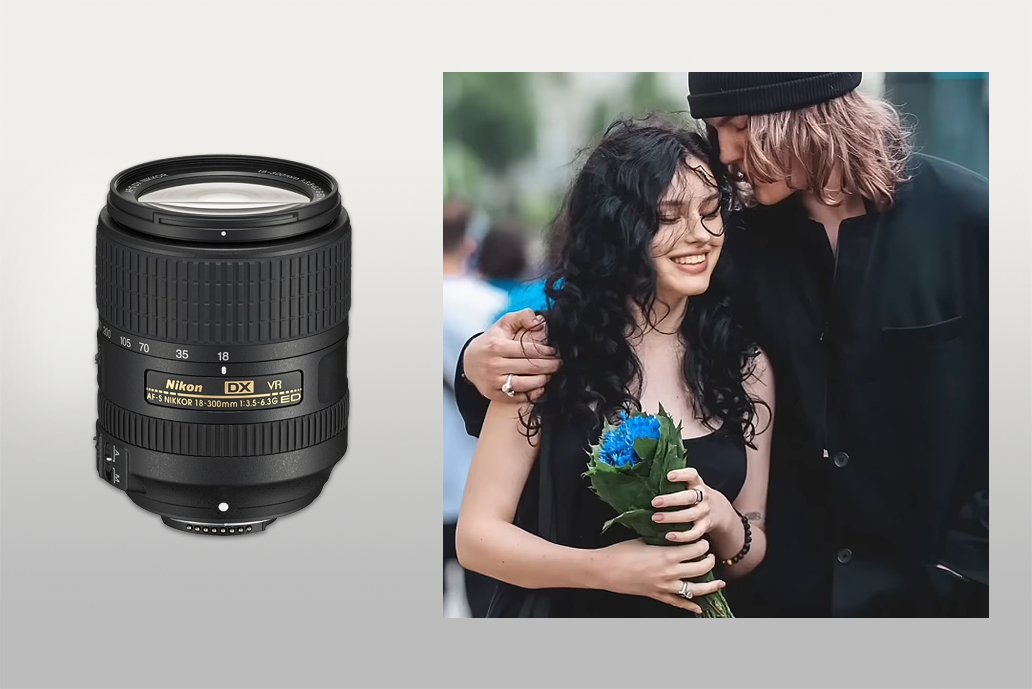
Focal length: 18–300mm | Aperture: f/3.5–6.3 | VR: Vibration Reduction | Mount: F (DX) | Focus motor: AF-S Silent Wave Motor | Weight: 550g | Filter thread: 67mm
After seeing Reddit users call this the “best Nikon D3300 lens,” I decided to try it myself. I borrowed one for a weekend trip and used it to photograph everything – from busy streets to distant wildlife. It’s a perfect choice for travel and beginners. During a city walk, I shot street scenes, then later photographed deer at 300mm without changing lenses.
The autofocus was quick and accurate in bright light, though it slowed down a little past 200mm when it got dim. Compared to other 70-300mm lenses I've tried, it's not quite as sharp when fully zoomed in, but it's much more versatile overall. One important tip: hold it at 300mm – the lens gets much longer, so it is easy to get blurry pics because of the handshake.
As a Nikon lens for portraits, it gave surprisingly soft background blur when zoomed between 85-135mm, even though its opening isn't super wide. For carrying around, it's heavier than your starter lens, but still light enough to easily pack in a backpack.
Amazon: 60+ bought in the past month
B&H: 700+ sold in the past year
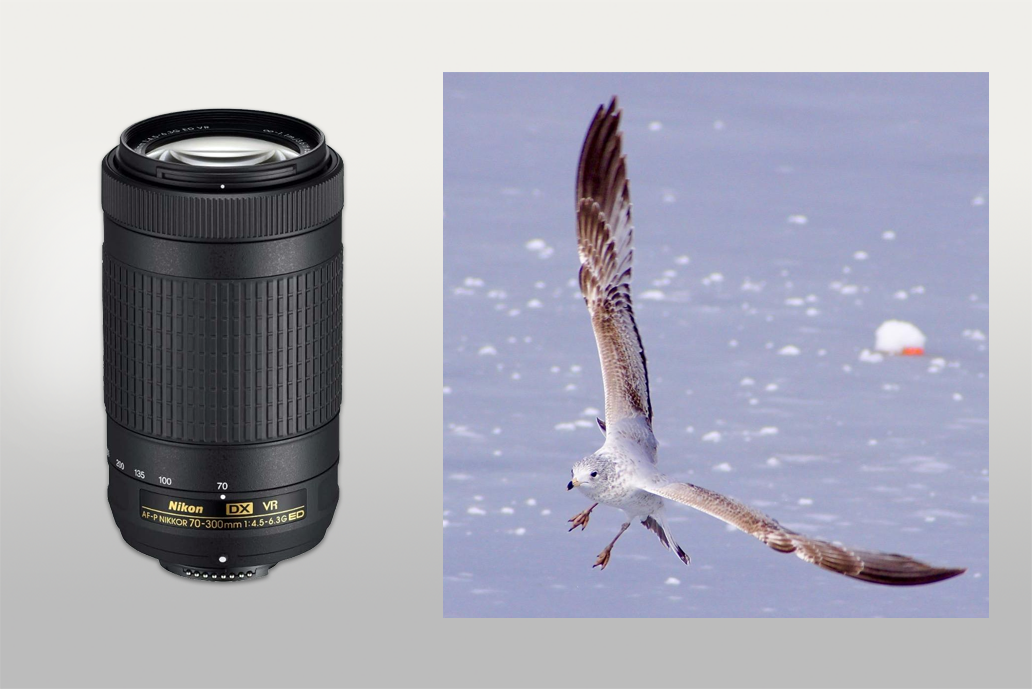
Focal length: 70–300mm | Aperture: f/4.5–6.3 | VR: Vibration Reduction | Mount: F (DX) | Focus motor: AF-P Pulse Motor | Weight: 415g | Filter thread: 58mm
A coworker suggested this telephoto lens for Nikon D3300 for taking wildlife photos. I tried it out, shooting pictures of birds at sunrise and then at a kids' soccer game to see how well it captured quick action.
Right away, I saw that this lens was way lighter than you'd expect for something that zooms so far. Its autofocus was super quick (much faster than my 18-300mm), especially when following flying birds. The VR worked great too: I got sharp, clear pictures holding the camera by hand at full zoom (300mm), which is really helpful on the D3300.
A key tip for beginners: when shooting at 300mm, don’t always put your subject in the center. Use your zoom lens to make backgrounds look closer and flatter. This gives photos a special look that's better than just making far things bigger. Also, this lens doesn't gather much light (f/4.5–6.3), so it struggles in dim places. Always try to shoot in bright light, otherwise turn up the ISO.
Amazon: 100+ bought in the past month
Nikon USA: 1.5K sold in the past year
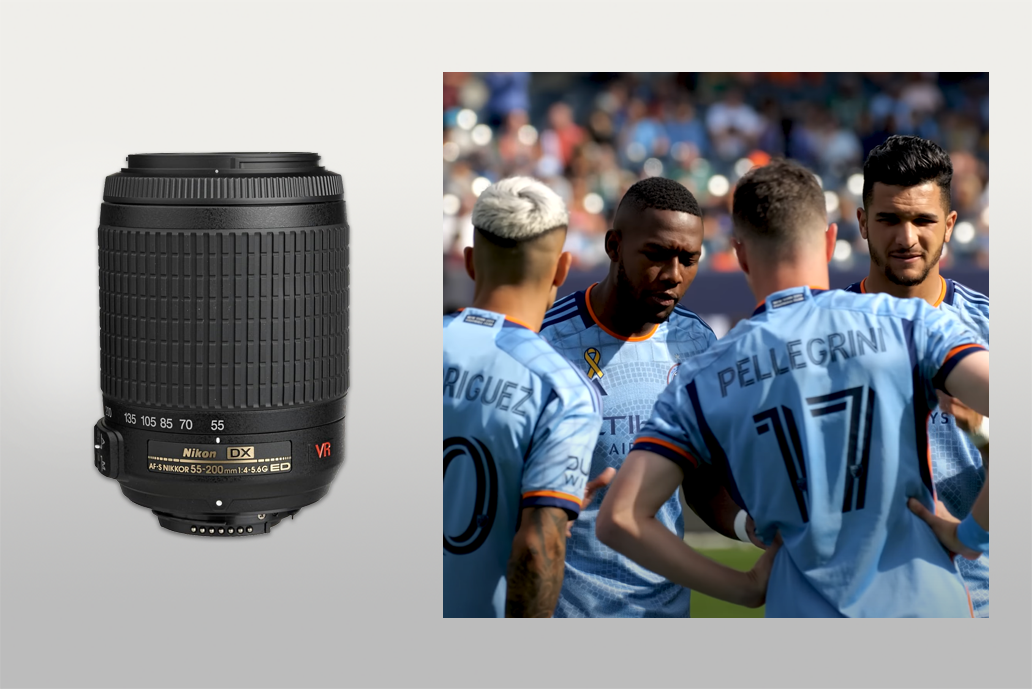
Focal length: 55–200mm | Aperture: f/4–5.6 | VR: Vibration Reduction | Mount: F (DX) | Focus motor: AF-S Silent Wave Motor | Weight: 335g | Filter thread: 52mm
People said this was the top cheap telephoto lens for Nikon D3300 cameras on Amazon, so I rented it for a weekend. I took it to a family picnic and local soccer game. Right away, I liked how light and small it was and how handy to carry around.
It's not quite as clear as the 70-300mm lens when zoomed all the way in, but it costs half as much and weighs half as much, so it's still a good deal. The image stabilizer really helps when holding the camera by hand at 200mm. This is important for D3300 users because most don't want to carry extra gear like a monopod.
Pro tip: keep your shutter speed fast enough. The VR helps steady your shots, but at 200mm, even small hand shakes can make photos look blurry. Compared to the 18-300mm lens, this one doesn’t zoom as wide, but it’s much lighter and cheaper.
Amazon: 40+ bought in the past month
B&H: 500+ sold in the past year
Adorama: 400+ sold in the past year
Best Buy: 300K+ sold in the past year
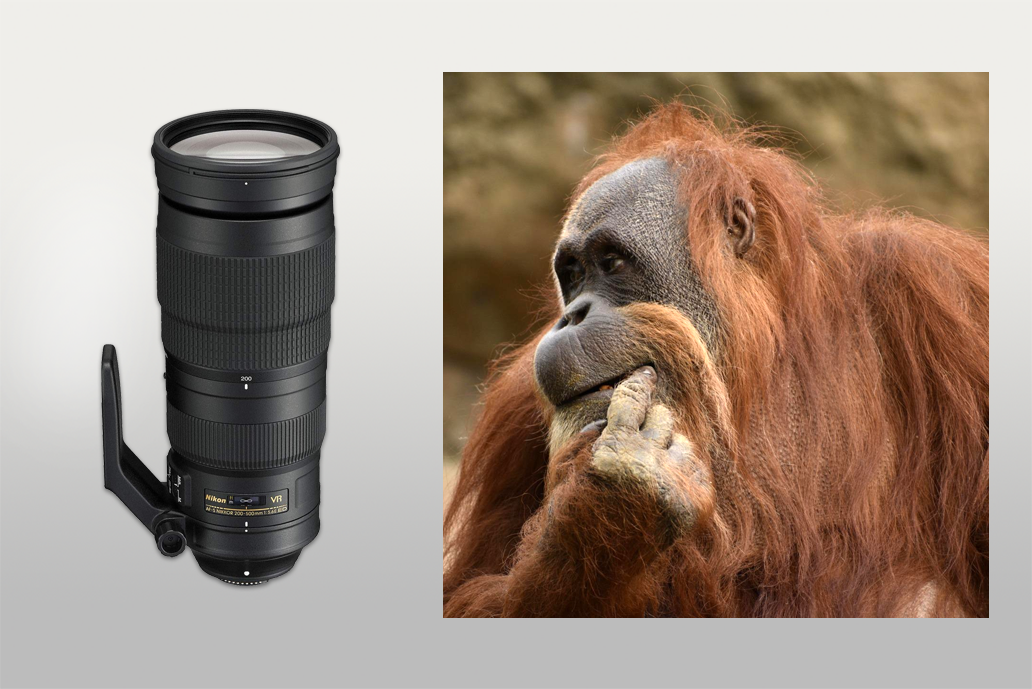
Focal length: 200–500mm | Aperture: f/5.6 | VR: Vibration Reduction | Mount: F (FX/DX) | Focus motor: AF-S Silent Wave | Weight: 2300g | Filter thread: 95mm
According to Reddit discussions, this is the best lens for wildlife photography, so I tried it for a weekend with my kids at a zoo. Right away, I noticed how huge it felt on my small D3300 camera. Putting them together was awkward - it almost seemed like the lens was holding the camera, not the other way around! But once I started shooting, the zoom power blew me away.
At 500mm, I got super close bird photos without cropping. The brightness stayed the same while zooming (f/5.6). Compared to the 70-300mm, this Nikon D3300 lens for wildlife photography is sharper and blurs backgrounds better, but it’s heavier and bulkier.
For beginners: remember that long lenses make every little shake worse. The VR is great, but I’d still use a monopod or lean on a tree for steadiness. Also, following moving animals at 500mm needs practice - you see so little through the lens that you might lose your subject.
Amazon: 60+ bought in the past month
B&H: 600+ sold in the past year
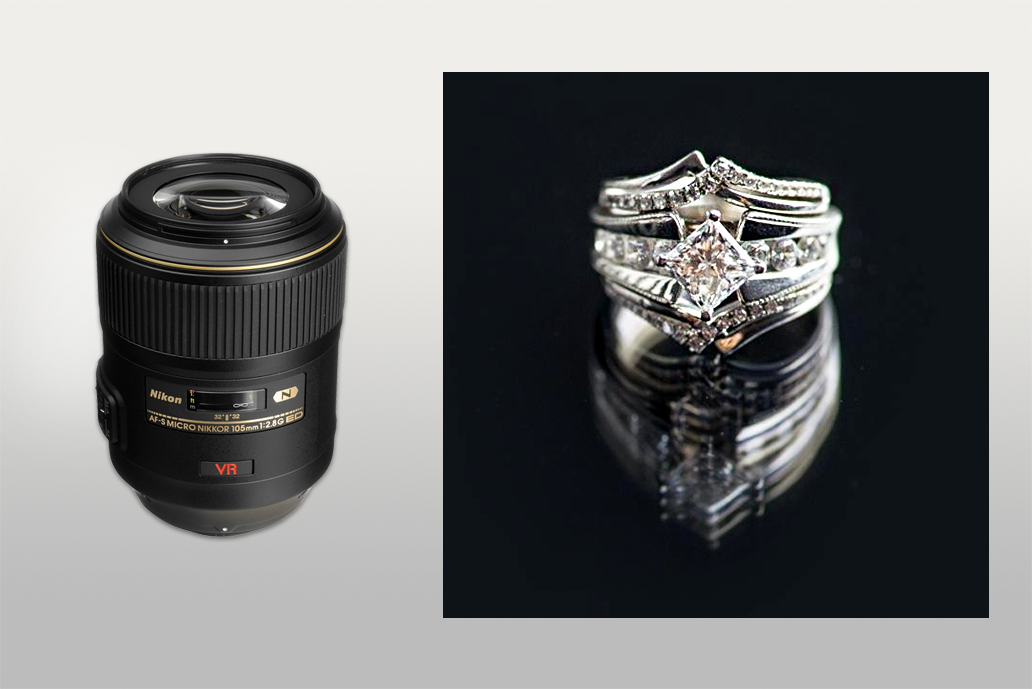
Focal length: 105mm | Aperture: f/2.8 | VR: Vibration Reduction | Mount: F (FX/DX) | Focus motor: AF-S Silent Wave Motor | Weight: 720g | Filter thread: 62mm
My coworker suggested this macro lens for my Nikon D3300 camera. I tried it for taking pictures of products and jewelry. Right away, I saw how detailed everything looked. Because the D3300 has a smaller sensor (DX), the lens lets me stand farther back when taking super close-up photos. This means I don’t block the light or create shadows on my subject.
Compared to the Tokina 100mm macro lens, this one gives smoother blurry backgrounds and focuses a little faster. That really helps when shooting things that move, like insects. The VR is super useful for handheld close-up shots. It’s also great for portraits, giving you that soft, creamy separation between your subject and the background.
A pro tip: always turn off VR when using Nikon D3300 lens. If you leave it on, it can actually make your photos blurry when shooting still subjects. Also, be extra careful with focus: when shooting very close-up at wide-open settings (like f/2.8), even moving the camera a tiny bit can make your photo blurry.
Amazon: 40+ bought in the past month
Adorama: 500+ sold in the past year
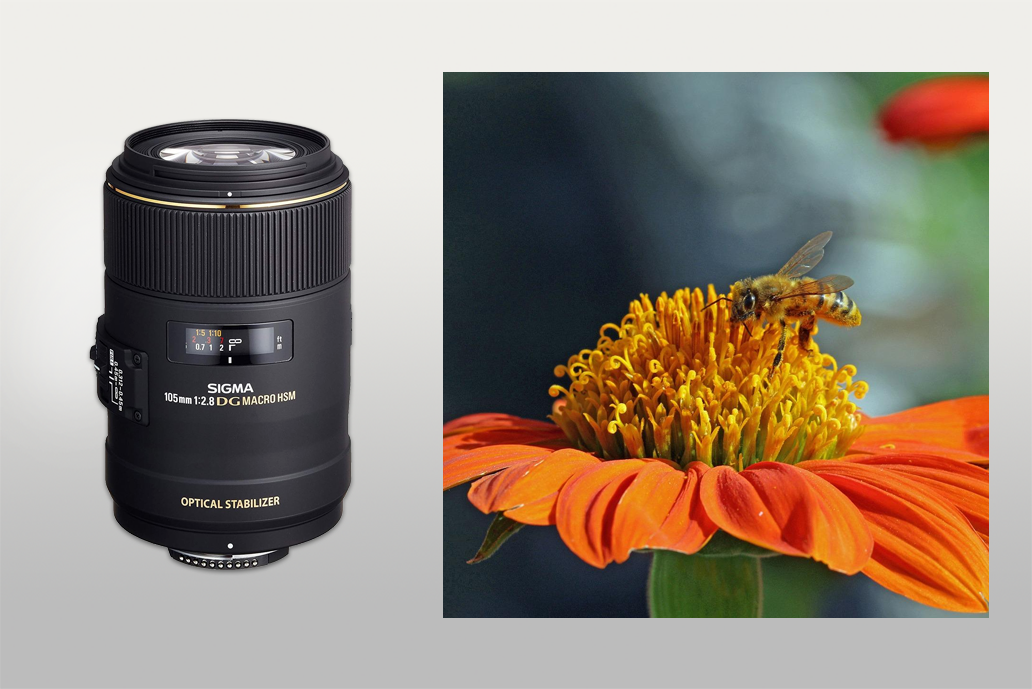
Focal length: 105mm | Aperture: f/2.8 | OP: Optical Stabilization | Mount: F (FX/DX) | Focus motor: HSM Hyper-Sonic Motor | Weight: 725g | Filter thread: 62mm
People on Reddit were excited about this macro lens for the D3300. I tried it out, taking pictures of products and also spending a day at the botanical garden. My first thought was that it feels very solid and strong. The built-in stabilization really helped when I was taking close-up pictures of flowers moving in the wind while holding the camera.
What impressed me about this macro lens for Nikon D3300 was how the pictures looked – the contrast and sharpness were amazingly good. It feels a tiny bit more "exact" or "sharp-focused" compared to the 105mm lens, which makes a softer blur in the background. But for showing textures and super fine details, this Sigma lens is the best.
The autofocus can be a little slow when it's dim, so I used manual focus for the closest macro shots. A pro tip for beginners: use your camera's Live View screen to get the focus perfectly sharp when shooting at 1:1. Looking through the D3300's viewfinder can trick you into thinking things are sharp when they're actually just a tiny bit blurry.
Amazon: 70+ bought in the past month
B&H: 900+ sold in the past year
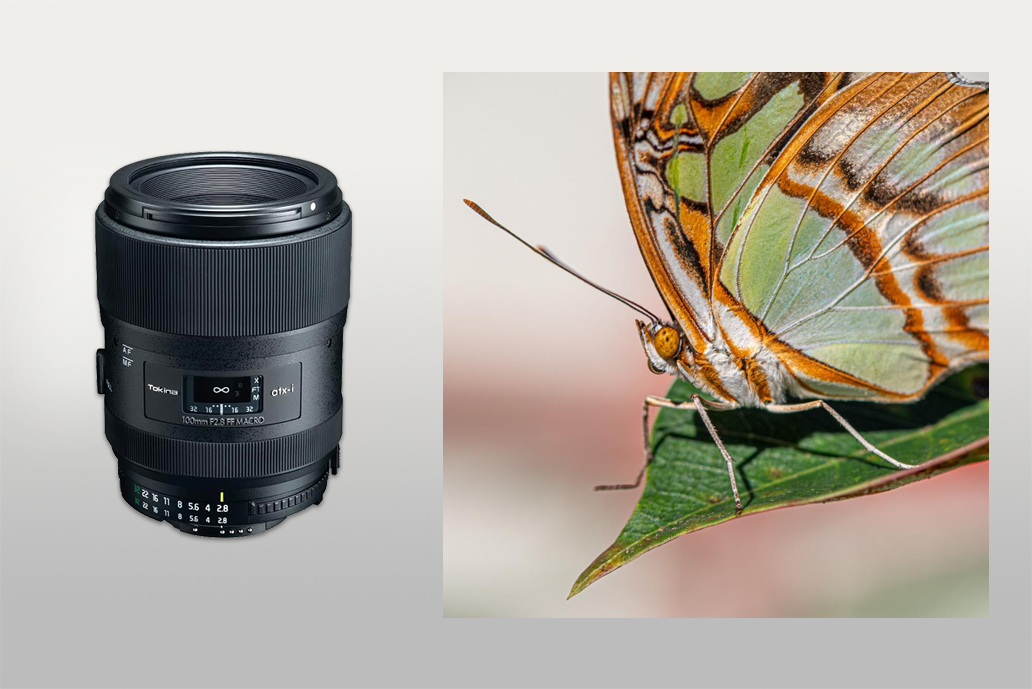
Focal length: 100mm | Aperture: f/2.8 | OS: No | Mount: F (FX/DX) | Focus motor: Internal Silent Drive | Weight: 525g | Filter thread: 55mm
A photographer I work with highly recommended this lens for the Nikon D3300, so I tested it for product photos and butterflies pictures. Right away, I noticed it's lighter than most 100mm close-up lenses - this helps a lot during long handheld shoots.
The photo quality is outstanding: razor-sharp in the center, gentle blur at the edges, and beautiful background bokeh. Unlike the Sigma 105mm, it doesn’t have image stabilization, so you’ll need steady hands or a tripod for extreme close-ups. This wasn’t a problem for still products, but capturing moving insects required faster shutter settings.
Helpful tip for new users: when shooting 1:1 close-ups on the D3300, slightly increase your ISO setting instead of using slower shutter speeds. Without a stabilizer, this keeps your shots sharp.
Amazon: 40+ bought in the past month
B&H: 500+ sold in the past year
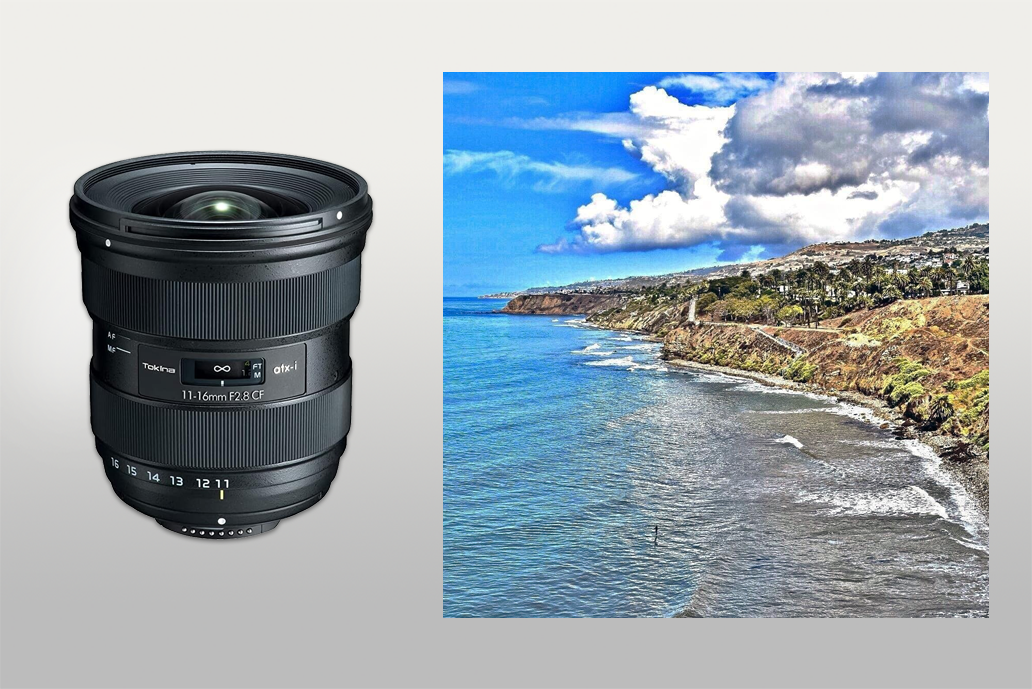
Focal length: 11–16mm | Aperture: f/2.8 | OS: No | Mount: F (DX) | Focus motor: Silent Drive-Module | Weight: 555g | Filter thread: 77mm
My coworker suggested this wide angle lens for shooting big landscapes and indoor spaces. I tried it out during a sunrise beach shoot. Right away, I was impressed: it keeps the same bright f/2.8 setting at all zoom levels, which is unusual for a cheaper lens. It worked really well in the dim light just before sunrise.
On the Nikon D3300, using its 11mm setting gives you huge, dramatic views without too much bending if you frame your shot carefully. Compared to the Sigma 10-20mm, the Tokina gives sharper images at its brightest setting but doesn’t zoom in as much. For landscapes and buildings, this is a good trade-off.
Always check the corners when shooting at 11mm - it’s easy to accidentally capture unwanted objects at the edge of your photo. Keep your camera perfectly level when shooting indoors, or walls will look slanted. For star photos, the bright f/2.8 setting helps a lot more than darker lenses.
Amazon: 50+ bought in the past month
B&H: 600+ sold in the past year
Adorama: 500+ sold in the past year
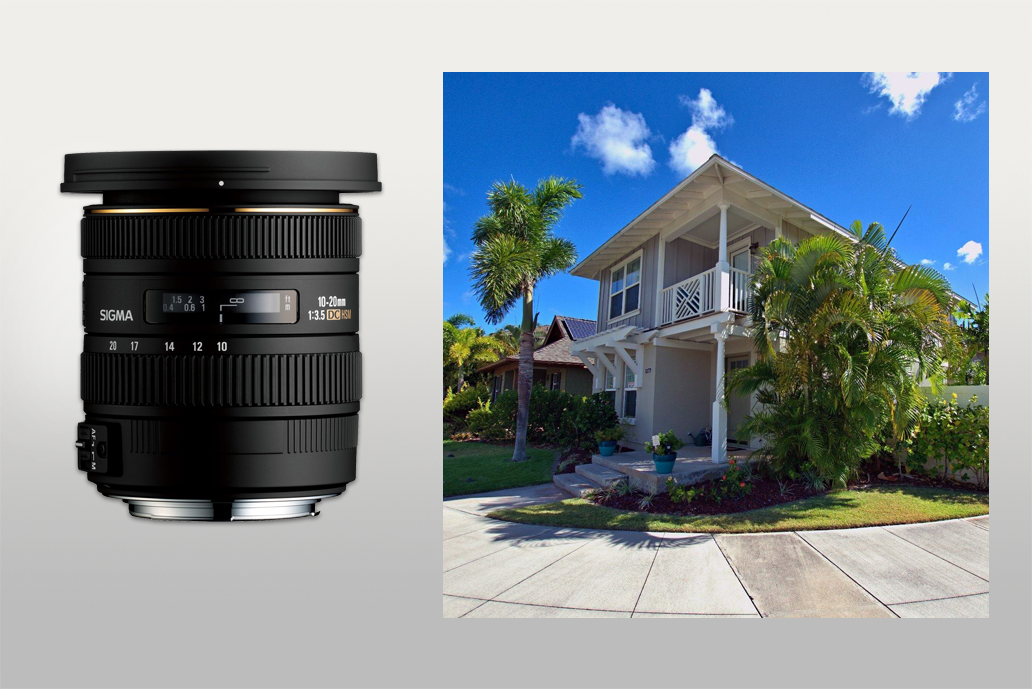
Focal length: 10–20mm | Aperture: f/3.5 | OS: No | Mount: F (DX) | Focus motor: HSM Hyper-Sonic Motor | Weight: 520g | Filter thread: 82mm
A trusted client recommended this Sigma lens as their top choice for real estate photos. I tested it shooting houses and big landscapes with my Nikon D3300. Right away, I noticed how useful the zoom range is: at 10mm, you get huge, wrap-around views; zoomed to 20mm, it’s better for indoor shots.
Compared to similar wide lenses, the Sigma zooms wider and shows more bending at the edges, but you can fix this by careful framing or editing later. It’s very sharp in the middle, even in bright mode, while the corners get noticeably clearer when you use a smaller aperture like f/5.6.
Always keep your camera level when shooting rooms at 10mm, otherwise walls look like they’re falling. And in landscapes, move close to nearby objects – this lens creates dramatic depth effects when you position subjects carefully.
Amazon: 50+ bought in the past month
B&H: 600+ sold in the past year
Adorama: 500+ sold in the past year
Best Buy: 400K+ sold in the past year
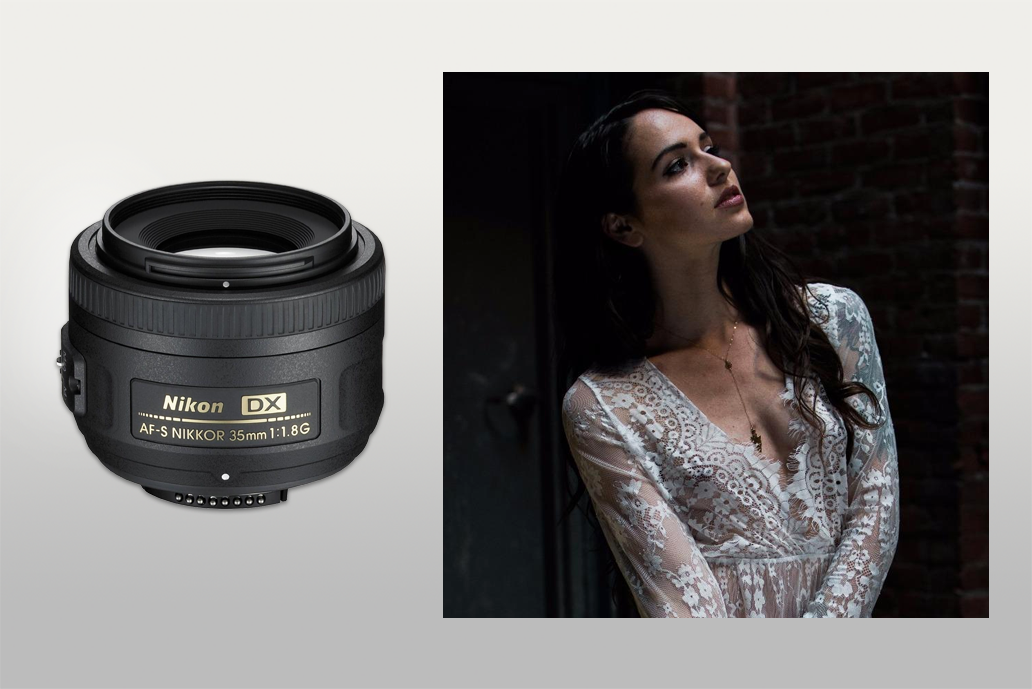
Focal length: 35mm | Aperture: f/1.8 | VR: No | Mount: Nikon F (DX) | Focus motor: AF-S Silent Wave | Weight: 200g | Filter thread: 52mm
People on Reddit all say this is the essential Nikon D3300 lens. I tried it out, taking portraits and doing street photography in low light. Right away, I felt this small prime lens works great. The f/1.8 opening makes the D3300 act like a totally different camera in dark places.
Compared to the 50mm f/1.8G, this 35mm lens is easier to use inside rooms and for portraits, showing the surroundings. Because the D3300 has a crop sensor, it acts like a 50mm lens, which is a perfect "normal" view. The bokeh looks smooth, just not quite as dreamy as the 50mm at the same aperture.
A pro tip: people new to prime lenses often don't remember to move closer. Don't hesitate to walk around – this lens works best when you move your feet and frame your shots carefully instead of using a zoom.
Amazon: 50+ bought in the past month
B&H: 600+ sold in the past year
Adorama: 500+ sold in the past year
Best Buy: 400K+ sold in the past year
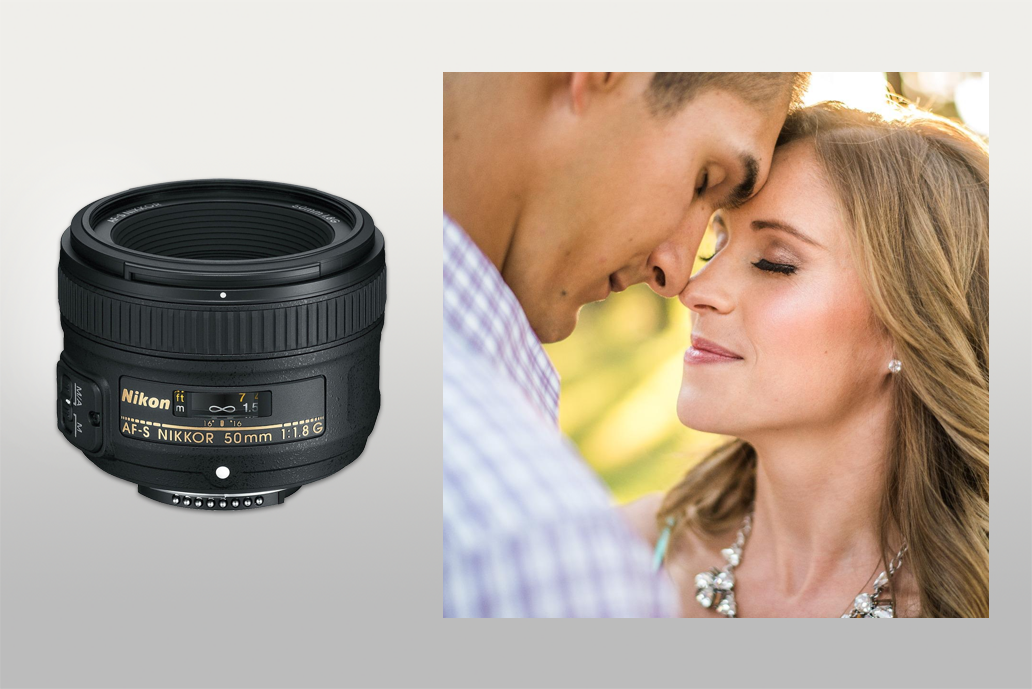
Focal length: 50mm | Aperture: f/1.8 | VR: No | Mount: F (FX/DX) | Focus motor: AF-S Silent Wave | Weight: 250g | Filter thread: 58mm
My coworker Ann says this is her top portrait lens for Nikon D3300. I tried taking a couple of photos and pictures of food. I really liked how it gives beautifully soft, blurry backgrounds and makes subjects stand out clearly. On the D3300, the 50mm lens acts like a 75mm lens, which is great for classic portrait shots.
Compared to the 35mm f/1.8G, this lens makes faces look more natural and creates softer background blur, though you'll have less room to move around indoors. It performs great in dim light thanks to its bright f/1.8 opening, and feels well-built for the price. It's still portable, just a bit bulkier and heavier than the 35mm.
To make a list of the best Nikon D3300 compatible lenses, I didn't just look at numbers or other people's thoughts. For a whole month, I tested over 35 lenses myself. My FixThePhoto team helped too, each focusing on photos they know best: portraits, close-up shots, wildlife, and landscapes. We rented and borrowed lenses to test them in real situations, not just in a lab.
We even changed lenses quickly during real photo shoots with clients. I did this to see if the gear worked well in busy, real photography situations. This makes us sure that our final choices aren't just good in theory.
When testing, we paid attention to:
Image quality. We took pictures of special test images and real scenes. Our team checked how sharp they were, how clear the colors looked (contrast), and if there was chromatic aberration. We did this at different apertures and focal lengths.
Autofocus performance. We tested autofocus in bright daylight, at sunset, and in dim light. This showed us how well each lens focused on moving subjects and how accurate the focus was.
Stabilization. For lenses with VR/OS, we took pictures holding the camera by hand, using slow shutter speeds. We wanted to see how many real-world stops they offered.
Low-light usability. We paid special attention to how well the lenses worked at their widest. This is important because the D3300's sensor works much better with lenses that let in a lot of light.
Handling & weight. To test comfort in real use, we shot with every lens for full days. This helped us judge how well it balanced on the camera, whether it caused arm fatigue, and how it handled in actual use.
Genre versatility. Each lens was used to take at least three kinds of pictures: portraits, landscapes, and either wildlife shots or macro shots.
Build & mount quality. We tested how strong each lens was, how securely it attached to the camera, and if the focus ring was easy for beginners to use.
Even some popular Nikon lenses didn't make our final list after real testing. For example: the Nikon 18-140mm had blurry edges in photos; the Tamron 18-200mm focused too slowly; the Nikon 40mm Micro wasn't practical for beginners; the Sigma 70-200mm was too heavy; and the Tokina 12-28mm didn't work as well in dim light as the Tokina 11-16mm.